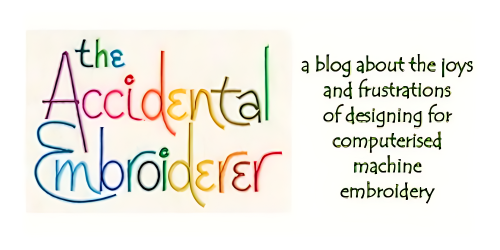I’ve been working with the Mylar for several days now and have struggled from time to time. As a material to work with it’s a bit of a curate’s egg – there are some good things about it but also some really annoying things. Perhaps the most irritating is the fact that overstitching the Mylar can cut through the film, which can mean that large pieces of the stuff are cut out, as on this blue fish. There were supposed to be large silver panels on the back, between the narrow bands that remain, but they were neatly excised by the satin stitch overstitching

Blue fish without all its Mylar
On the other hand, the large areas of Mylar on the bottom of these fish survived perfectly well, and I can’t see why it remained in place on these, but was cut out of the blue fish

Three fish that managed to hang on to all their Mylar
As I’ve been discovering, the safest thing to do is to overstitch the Mylar with lines of running stitch, which seem to hold it in place. That’s fine where it suits the design, but sometimes a design demands large areas of plain glittery finish, and then you’re stuck

How to keep your Mylar – add a stitched grid
So as advice to anyone starting to digitise designs with Mylar, I’d suggest reducing the density of both running and satin-stitched areas. Even then, however, you can’t really get away with large areas of unsupported Mylar. Still, one of the secrets of good craftsmanship is to recognise the limitations of a medium, and give in to it gracefully, so I’d better learn to bow to the inevitable
